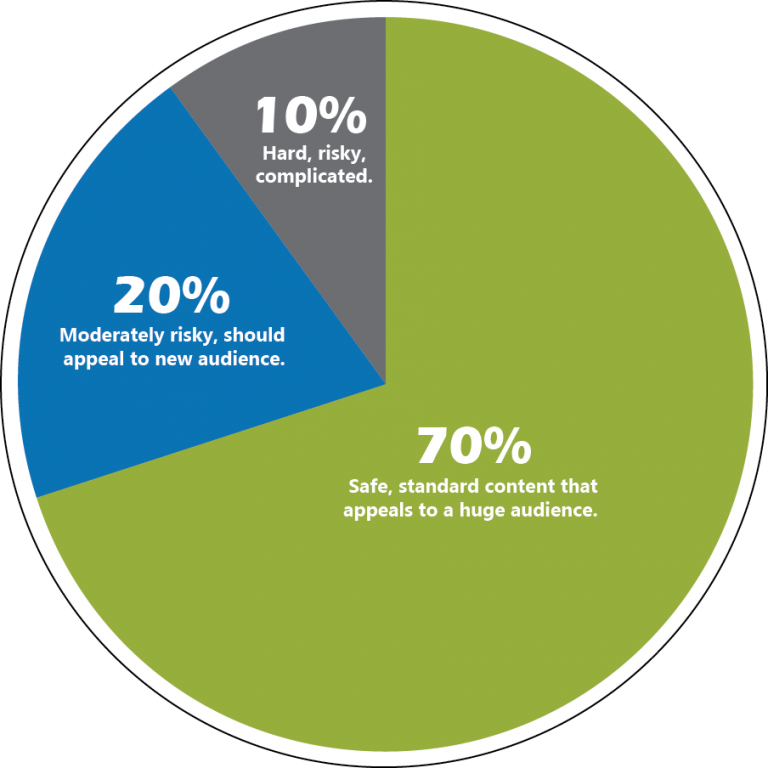7 key work habits to help you get noticed by top management
Good habits bring many benefits not only to your life but to your career too. Build the following work habits and you will get noticed by top management.
7 work habits to help you get noticed by top management
Work Habit #1 – Respect and achieve deadlines. Speak up if the deadline is not realistic.
First, make sure you understand the nature of the task at hand and if it’s within your area of expertise.
Second, ask yourself: Is it necessary to use specific platforms or tools to achieve the project? Tell your manager about that. Does it take more time than estimated? Tell your manager and set a new deadline together.
Work Habit #2 – Work intently. What does it mean?
Don’t work just to check off one task on your list of tasks for the day. Always do your work with the bigger business or team goal in mind.
Often there are differences between business perspectives inside the company: top management sees things from one vantage point while employees have an equally valuable different touchpoint with the market depending on their job roles (customer service or sales). Whatever the task, find relevant information and extract the insights necessary to help you get closer to your business goals.
Work Habit #3 – Ask open questions to uncover areas in need of improvement
When you ask questions about the company, the business or your job role, you show interest in your employer, and you get noticed as an engaged and motivated employee. You should be able to ask questions whenever you need context or additional information to meet your objectives.
However, the best time to ask relevant questions is in the first 30 or 60 days as a new hire. Why? Because you speak from an unbiased perspective and provide top management with a fresh overview. This is the perfect time to recommend changes. It’s the now-or-never-moment when you can ask Why do you do this or that operation like that? and if you receive the Because that’s how we’ve always done it answer, come up with improvement solutions.
Work Habit #4 – Help your team members succeed
In this time and age, when moving fast and breaking things is essential to the success of companies in every industry, people don’t work in a bubble, they work in a team.
Successful teams are the ones whose members learn something new from each other every day. In these teams, employees first grow individually, as a professional, and second, collectively as a team. Help your team succeed by sharing relevant info or knowledge with your team members.
Because teams who learn together, grow together.
Work Habit #5 – Write improvement proposals in your area of expertise
The company’s top management is responsible for establishing policies, guidelines and strategic objectives. They set the company on the path to achieving business goals, allocate resources and value employees who are committed to the company’s mission and values.
Employees who are creative and are always looking for ways to use their experience and expertise to help the company scale up get noticed by top management and are more likely to advance in their careers.
Work Habit #6 – Identify problems and come up with at least one solution
Leadership and top management have an overview of the company and where the business is headed, but they can sometimes have a blind spot concerning areas that need development.
They simply cannot see what the company is missing, but employees can. If you identify areas where the company is struggling or could use improvement, take one step forward and talk to management about it. Prepare yourself for the meeting: gather stats, relevant insights, talk to colleagues and present at least one solution.
Work Habit #7 – Search for professional development courses to hone your craft
Successful professionals never stop learning. Developing your skill set provides you with the opportunity to become a better professional and improve your results. Search for professional development courses in your industry and show top management how they help you boost performance and achieve business goals.
Returning to Work: 8 Key Strategies for Businesses to Prepare for and Support Employees
The COVID-19 crisis has confronted leaders, managers and businesses with one of the biggest challenges ever encountered in protecting the physical and mental health of employees along with a severe impact on business operation and productivity.
Many people and businesses have learnt to adapt to discovering and implementing new, effective and creative ways of keeping things going.
Adapting to WFH has brought both difficult demands, as well as huge opportunities for different ways of working and doing business.
Through this crisis we have not only witnessed the adverse impact on our physical, social, financial and professional status and wellbeing, we have also seen how hugely detrimental this has been to people’s mental health.
Millions of us have had to make major adjustments to personal loss, isolation, restriction of movement/travel, social distancing, job insecurity and unemployment, as well as combining work with home life. All of which have contributed to high levels of stress, fear, anxiety and uncertainty, along with increased mental health problems.
Learn more: Getting us through the crisis: 10 ways to build mental resilience
Returning to Work – the Next Big Challenge
With the recent decision of a gradual return to work, employees and businesses are faced with a major new challenge.
How can they prepare for and support a safe and effective return to work?
Sustainable strategies, to address this issue, require recognition of a number of factors.
Understanding and responding adequately to stakeholder expectations, safety requirements for physical and mental health, as well as addressing the psychological impact of this crisis are crucial in supporting employees to re-enter and to confidentially engage in their work.
A significant starting point is the acceptance that a return to work, for many people, will not be business as usual and that working practices will need to change.
It is also important to be aware that individuals react very differently to challenging events, so it can be useful for leaders and managers to be prepared for a range of different responses.

How to Prepare for and Support Employees Returning to Work: 8 Key Strategies
1. Acknowledge Employee Needs & the Impact of the Crisis
Leaders and Managers can greatly benefit from an awareness and understanding of the psychological and emotional consequences of the present crisis. A clear acknowledgement of the situation, its impact and the continuing risks express both the recognised responsibility and enlist joint cooperation.
2. Check-In & Offer Emotional Support
Leaders and managers should also take time to check in on employees and find out how they are doing.
Empathy is an important part of how to express a genuine understanding and interest in the experience and welfare of others.
Listening and acknowledging how the situation could be impacting people and offering appropriate support services, helps decrease fear and promotes a sense of security.
3. Ensure You Have Open & Continuous Communication
One of the most helpful and essential processes, particularly, when dealing with crisis situations, is providing employees with relevant information on their work, as well as the business status, ensuring to keep people regularly updated.
In seeking to reassure and reduce anxiety and uncertainty, employers can support by providing a clear explanation of work changes and expectations, along with details on how the situation is being managed.
In responding to the Covid-19 crisis, it is particularly important to clearly communicate the health and safety measures, which have been put in place to protect the welfare of all employees.
People need to have confidence that someone is taking responsibility and that action is being taken to address the situation in the best way possible.
4. Understand Expectations & Remain Flexible
Whatever the expectation there is a need to listen, acknowledge and wherever possible try to accommodate reasonable expectations.
Respectfully expressing what clearly can be done rather than what cannot be done for unmeetable expectations.
Being flexible and making reasonable work adjustment is vital to being supportive, as well as gaining optimal engagement and productivity.
Businesses should consider the possibility of flexible conditions related to work hours, working from home, employee roles and tasks, time off, an adaptation of working practices and provision of any necessary resources.
5. Review & Establish Your Business Processes
Businesses should ensure that comprehensive and up-to-date policies and procedures are established, which specify clearly defined regulations and resolution strategies.
Enabling businesses to perform at optimal level involves having people and operating systems, which possess adaptable and flexible reactions with a problem-solving approach. Employees are then fully informed and can function within an effective structure with clear guidance.
6. Match Present Demands & Needs with Appropriate Responses
Businesses and employees greatly benefit from being supported and cared for through the guidance and resources they are given.
Following any crisis, businesses should be committed to getting things back on track, as safely and quickly as possible.
Identifying the present demands and needs of employees and responding in a direct and practical manner actively supports this process. This also contributes to building a strong and positive company culture, in which employees are more able to trust and feel safer.
7. Navigate a New Course
If businesses are to maintain direction and respond successfully to the needs of employees and the demands of the situation, then openness to different ways of doing things is an absolute necessity.
Progress can be held back by insisting on sticking to a particular course and not adapting to working practices.
Recognising when something is no longer necessary or fit for purpose and altering direction, serves to constructively optimise an employees’ return to work.
Leaders and managers can develop and implement changes through lessons learnt, good practice, continuous feedback and clear complaints and corrective measures process.
8. Connect & Utilise External Professional Services
Following a crisis, people can often feel fearful or apprehensive about returning to work.
Businesses can then benefit from investing in support services, as well as collaborating and building new partnerships.
Working together with relevant professionals and organisations can aid innovation, a greater sense of safety, better engagement, increased productivity, as well as the creation of strong and effective support structures. Most importantly this can promote the positive health and wellbeing of leadership and employees.
Join the Conversation
We’d love to hear what you have to say.
Get in touch with us on our LinkedIn Group, Facebook Group or Twitter.
Vacation Time: 17 Tips & Rules for Employees, CEOs and Organizations
It’s summertime and people are thinking about going on vacation. Soaking up the sun on the beach or hiking up the mountains? Whichever you prefer, all employees must take vacation time off.
What this article talks about:
- 6 rules for good managers to encourage employees to take their vacation time;
- 8 tips for employees looking to have a relaxing and guilt-free vacation;
- 1 rule for CEOs to follow in order to have a relaxing vacation;
- 2 vacation policy recommendations for organizations (with examples).

Americans – the No Vacation Nation
A recent survey conducted by Kimble Applications dubs the Americans the No Vacation Nation. This survey concludes Americans are overworked, under pressure and not taking time off from work.
Here are the survey’s main findings on how many Americans take time off and why they struggle to leave the office and go on vacation:
- 53% don’t take their vacation days;
- 27% say they just have too many projects or deadlines to take time off;
- 13% fear they’ll return to too much work;
- 19% are anxious about being away from work;
- When they do go on vacation 48% say they proactively check in on work;
- 14% believe that employees are more likely to succeed and advance in their career if they choose not to take all
- of their vacation time;
- 19 % say that they’ve felt pressured by their employer or manager to not take their vacation time off.
What are the consequences of this situation?
Accumulated stress, increased fatigue, depression, decreased productivity rates and ultimately burn out.
On May 25, theWorld Health Organization (WHO) formally defined the syndrome as energy depletion, exhaustion and negativity resulting from chronic workplace stress (source).
Working while on vacation is also bad for your health. It ruins your relationship with your spouse and your kids.
How would you feel if your children believed you loved your work more than you loved them?

6 Rules for Good Managers
You are certainly familiar with the saying People don’t leave companies, they leave bad managers.
Vacation time is vital for the employees’ physical and mental health as well as for work productivity and good managers should encourage them to take it.
Good managers:
- Don’t frown upon employees taking up vacation;
- Don’t make their employees feel shame or guilt around vacation;
- Are the first to set a good example and take their allotted vacation days;
- Never call or email their team members while on vacation;
- Assure him/her the team can handle anything that could come up while they are away;
- Expect their team members to disconnect, relax and focus on making amazing memories and get back to work feeling recharged.
I was inspired to write this article after reading a LinkedIn post by Brian Dresher, one of my 3rd-degree connections. At the time I had made a mental note to come back to Brian’s post and refer to it in my article. Unfortunately, I had failed to save the link to his post. I hadn’t liked his post either so it didn’t show in my LinkedIn activity. I searched for Brian’s post for three hours and I was beginning to come to terms with the fact that I wasn’t going to mention it in my article when I suddenly found it! Hooray! What a relief!
You can see why I was so adamant to show it to you:
8 Tips for Employees looking to have a relaxing and guilt-free vacation
Going on vacation is mandatory if you want to avoid a drop in productivity, increased levels of stress and fatigue.
But if you want to have a great time during your vacation you need peace of mind.

Here are 8 tips for employees looking to have a relaxing and guilt-free vacation:
- Communicate the time you will be out of the office to your prospects/customers;
- Don’t call your prospects/customers while on vacation!;
- Make sure you get done the important tasks in your final working week so you can enjoy your time at the pool sipping cocktails;
- Handover important tasks to your colleagues so you can relax knowing they’re being taken care of while you’re away;
- Stay off your smartphone, limit yourself to checking it only an hour a day;
- Make a rule of not checking your office emails and stick to it;
- Anticipate any needs your colleagues might have and prepare a word document or spreadsheet to answer them;
- Appoint one of your colleagues to handle your customers’ needs while you’re away.

2 Vacation Policy Recommendations for Organizations
Netflix, which disrupted the TV entertainment industry and made binge-watching a cultural phenomenon has a strong company culture. An important aspect of this culture is its unlimited vacation policy. This policy states that employees are free to intermix work and personal time at their own will and take time to go on vacation.
Netflix CEO Reed Hastings sets a good example in this respect – he takes 6 weeks’ vacation. Why? Because “it helps you get back to work with fresh new ideas.”
Learn more: 8 Key Factors Behind Netflix’s Success Story
Like almost all tech startups in Silicon Valley, Buffer had an unlimited vacation policy for its employees as a company perk just like Netflix. What management at Buffer didn’t expect was employees barely taking any vacation at all.
They realized the main problem with unlimited vacation time was not knowing how many days off someone should take which prompted the company to go through a series of policy adjustments. The company went from unlimited vacation to offering its employees a $1000 bonus to go on vacation, a minimum vacation policy of 15 days off to a full-team Buffer is closed strategy.
For the first time, we’re closing Buffer for a mid-year holiday (Wed-Fri). Here’s a lil’ thread on holidays and time off on our distributed team. Maybe it’ll help others in #remotework!
— Courtney Seiter (@courtneyseiter) July 2, 2019
Here are 2 recommendations regarding your organization’s vacation policy:
1. Have a vacation policy in writing
To have everyone on the same page, write down your vacation policy and communicate it across your company. The goal of having a written vacation policy is to lay down ground rules and be prepared to answer questions from your employees.
2. Avoid schedule conflicts
If you cannot have your company close for a limited amount of time – like Buffer – is not a solution, then stick to your employees scheduling their vacations which – more often than not – leads to schedule conflicts.
To avoid such unpleasant situations, you need a set of rules. You can go with first come, first approved rule or 3 employees at all times rule and provide them with an editable calendar so they can self-manage their vacation days to follow this rule.

1 rule for CEOs having a relaxing vacation – Empowered Employees
You are the CEO of your company. You worked hard to take your company off the ground and in the first years since launching your business, you took no vacation at all.
Now the company is powered by your employees and business operations run smoothly. It’s time for you to take the much-needed time off and go on vacation.
Having a great summer vacation is conditioned by one thing only: that you have been actively empowering your employees throughout the year.
Why?
Because empowered employees don’t need micromanaging, they are responsible and can be trusted to make the right decisions for the company. Empowered employees have stronger job performance and are more driven to take care of the needs of the customers they serve. When you empower your employees, they ensure the success of your business.
What steps does your organization take to encourage its employees to go on vacation?
What is the vacation policy of your company?
Share your thoughts in the comments.
Join the Conversation
We’d love to hear what you have to say.
Get in touch with us on Facebook Group and Twitter.
How the Rule of 150 Impacts Your Company
The Rule of 150 also known as Dunbar’s Number can impact your company negatively.
Read on to learn what is the Rule of 150 and what changes you can implement to protect your company.
How many people do you have on your Facebook friends list?
How many of them do you know personally?
Among the people you know personally, with how many do you have stable social relationships?
Anthropologist and evolutionary psychologist Robin Dunbar says there is a limit to the number of people with whom we can maintain stable social relationships, and that number is 150. No matter how many people Facebook suggests you bring into your group, the number of persons you keep contact with is still 150.

Prof Robin Dunbar / pressreleasses.responsesource.com
The number 150 is a direct result of our brain size.
In the early 1990s, professor Robin Dunbar was studying the correlation between primate brain size and average social group size.
He found that the number of social group members a primate can track appears to be limited by the volume of the neocortex. Only a few chromosomes separate humans from primates so he inserted the human brain size into this equation and the number that came up was 150.

Dunbar’s Number / applum.com
Anthropological data supports his theory: 150 is the average size of farming villages in the Neolithic and professional armies in the Roman Empire.
Dunbar’s number is also validated in modern times: Twitter users can entertain a maximum of 100–200 stable relationships, LinkedIn or XING users who have around 150 connections are more successful in getting job offers than those who have over 1000 people in their network.
Learn about XING here: Top 5 Social Media Platforms You Never Knew About
Does the Rule of 150 influence the dynamics of organisations?
As it turns out, the answer is yes.
When the number of employees is below or at this threshold, the company runs smoothly.
When the number of employees exceeds 150, it has a negative impact on the company.
Here is what happens in companies where the employee count rises above 150:
- Decision-making processes are stalled;
- Employees are given less feedback and career development mentorship;
- Managers are overwhelmed;
- Information about company strategy is not adequately spread across staff;
- Internal communications are less effective.
Learn more: Keeping Your Employees Happy Is More Than a Higher Paycheck
6 Smart Changes to Implement in your company
Every company CEO and startup founder wants their organisation to grow and develop. This usually means hiring more people.
How should companies grow without experiencing the negative consequences of breaking the rule of 150?
They need to change and adapt.
As the head of your company, here are 6 smart changes that you can implement to make sure your employees are efficient, productive and happy even if their number is over 150:
- Create smaller groups of employees to allow them to connect with each other more easily;
- Establish company rituals that support company culture and community;
- Use internal chat app (i.e. Slack);
- Set up meetings to share with your employees what works and what doesn’t work;
- Have the company’s top managers meet on a weekly basis to share vital information about the company;
- Take time to share company values and history with your staff and new employees.
Join the Conversation
We’d love to hear what you have to say.
Get in touch with us on Facebook Group and Twitter.
Resources:
The Circle of Safety – Simon Sinek’s Rule For Great Leadership

Simon Sinek – Leaders Eat Last
I recently finished Simon Sinek’s book Leaders Eat Last. It took me one hour each day for seven days to read it; it took Simon twelve months to write it. In Acknowledgements, in the last chapter of his book, Simon mentions working fourteen hours a day for many days on end. He did extensive research on the subject, talked to many people, he flew to Afghanistan and interviewed commanders in the American Air Force and the American Navy, where great leadership makes the difference between life and death.
Learn more: Simon Sinek – 8 Things You Didn’t Know About Him
Simon is a cultural anthropologist by training and it shows extensively in his book. Cultural anthropology is in my top three most interesting topics so you can imagine my enthusiasm – I couldn’t put the book down. But don’t worry, there is no scientific jargon. Simon’s writing flows effortlessly and it is easy to understand. It’s a great book and if you haven’t read it yet, I highly recommend you do so as soon as possible.

image source: trulyhumanleadership.com
Leaders Eat Last is a book on leadership; what makes it stand out from other books on the same topic is the author’s approach.
Simon Sinek takes a fresh and original approach to leadership – he looks at leadership through the lens of cultural anthropology. What makes the book very interesting is that his observations are supported by real-life business case studies.
It’s not the purpose of this article to review the book but to introduce you to one of Simon Sinek’s concepts –
The Circle of Safety.
What is The Circle of Safety?
The goal of great leadership is to inspire employees to deliver their best work and support the organisation to become successful. Notice I didn’t use the verb manage because employees don’t expect to be managed – they expect to be inspired.

What are leaders required to do to achieve this goal?
All they need to do, according to Simon Sinek is implement The Circle of Safety in their organisation.
First, let’s establish what a successful organisation is. Here is Simon Sinek’s definition of the successful organisation:
A successful organisation overtakes its competitors through innovation, inspires respect both inside and outside, has the highest level of loyalty among its employees, the highest retention rate and has the ability to overcome any challenges that may arise.
Second, in regard to the concept of safety, Simon notes the following: safety goes both ways in that the leader ensures the safety of his employees and in turn, the employees ensure the safety of the organisation.
Having said that, let’s delve into The Circle of Safety concept and discover how it serves and supports great leadership.
Leaders have one job only: to create a company culture in which employees cooperate naturally towards growing the business. That’s the safety zone: when employees come to work not for the company, but for themselves and their colleagues.
Learn more: Keeping Your Employees Happy Is More Than A Higher Paycheck
Trust the leaders, trust the employees
How do leaders create this type of company culture? By earning their employees’ trust.
The trust between the organisation and its employees is essential. To earn their employees’ trust, leaders must first empower them.

When you work with people you trust they will do their job better in order to deserve and keep your trust. These employees will show loyalty and commitment to the organisation without the need for exterior incentives like promises, financial bonuses or other perks.
When people feel appreciated by the organisation, they feel safe and relaxed; this allows them to care about and connect with their colleagues and start working as a team to support the organisation achieve success and prosperity.
Protection from outside threats
Trust means employees feel protected from threats coming from inside the organisation.
When there are no layoff threats looming over them or workplace rivalries they must fight in order to survive, employees are more prepared to protect the company from outside threats. Internal rivalries lead to the weakening of the company, making it less capable of standing up to potential dangers.

People first, revenues second
Leaders must make employees their top priority, not company sales or revenues. No financial goal should take precedence over the people. In times of business crises, Simon supports the strategy of sacrificing financial vectors to save the employees- not the other way around.
Unlike the threats from outside the company which are not in our control, leaders can control the threats from inside the organisation.
They can take steps towards eliminating intimidation, humiliation, biased attitudes, isolation, feeling useless, feeling rejected and being stressed. Workplace stress and anxiety have very serious consequences on our health and well-being- there’s no doubt about it. Statistics report a direct link between a negative workplace and a wide range of illnesses: from physical and mental fatigue to obesity, heart disease, burnout and eventually death. Increasing levels of detachment among employees are also causing low retention and engagement rates.

Lynda Gratton will teach you how to keep your employees engaged and motivated to do great work. Get your tickets today!
No safety zone means a dangerous environment for the organisation
When the organisation doesn’t provide a safety zone for its people, various case studies of prominent companies showed that it gives rise to negative feelings like paranoia, cynicism and employees with personal agendas. In short: a dog-eat-dog kind of culture where arrogance, inflating egos and fear make the rules.
When employees are left to fend for themselves, they withhold valuable information regarding an imminent threat to the organisation. The relationships between employees and leaders are weak and everyone seeks to satisfy their own interests. That’s what happened to Nokia. Nokia’s culture of status, shared fear and temporal myopia contributed to its downfall.
Leaders can fight negativity by creating a powerful culture based on a transparent set of values and beliefs. In this culture, employees are given the power to make decisions on their own because their leaders have previously shown trust and empathy. Which means building the safety zone.

A safe environment breeds innovation
It’s the natural cooperation between employees that makes the company powerful and resilient, not their products or services.
When people believe that everyone else inside the company will take care of them, they will contribute to the free exchange of information and data.
Sharing knowledge and information is what great leadership is all about
In a safe organisation, the leader is willing to share knowledge and information just as much as the next employee. Actually, it’s the leader who sets the tone and takes the first step down the path of sharing valuable information.
Numerous case studies and research data report that a favourable working environment leads to organisational stability and long-term high-level performances.
We also maintain our loyalty towards the employer, we help each other and we take pride in our work doing our jobs with passion.

A leader’s role is to set the tone
A leader’s role is to be the first who throws himself in front of danger to protect the group.
When the safety zone is in place, this doesn’t happen because it doesn’t have to. The safety zone protects him and the organisation. His people protect the company from outside dangers so the situation in which he has to sacrifice himself doesn’t arise at all.
The true social benefit of trust is reciprocity. Trust feeds itself. The organisation supports the development and growth of its employees in order for them to take on more important responsibilities.

A leader’s job is to teach and mentor his employees into becoming more competent and to earn their trust.
If the organisation doesn’t trust its people, it will monitor and surveil them, it will time their bathroom breaks and phone conversations.
Leaders rely on employees to provide firsthand information and data and employees rely on their leaders to provide direction, guidance and safety.
Join BRAND MINDS 2023 and learn how to become a better leader from global business thinkers James Clear, Nassim Taleb, Lynda Gratton, Neil Patel, Renee Mauborgne, Blair Singer, Anne-Marie Imafidon and Duncan Wardle!

Make Your Workplace More Accessible To Employees With Autism
According to Autism Europe, there are around 7 million people with autism in the EU.
In order to draw attention to the urgent needs of people with autism around the world, the United Nations General Assembly declared 2 April the World Autism Awareness Day.
Studies have shown that between 76% – 90% of adults with autism are unemployed.
Although autism affects a person’s ability to interact with the people around them, autistic persons display innate abilities and skills. Attention to detail, enjoying repetitive tasks, lack of tolerance for errors, persistence and loyalty are some of these skills. Businesses could employ persons with autism to work on tasks such as software testing, programming and data-entry. Unfortunately, such opportunities for high-quality work have gone to waste due to autistic people’s high rate of unemployment.
The mission of Autism Europe and other organizations is to drive change by creating innovative employment opportunities for people with autism.

MyAccessHub is a platform designed to help businesses make their workplaces more accessible and more inclusive to autistic employees.
myAccessHub was co-founded by Gearoid Kearney and Miriam O’Sullivan.
Mr Kearney developed alvrCloud and is currently working on the 360 VR & Animation Content for the Programme.
Mrs O’Sullivan has over 10 years of experience working with children and adults with autism; she has recently completed her Masters in Autism and Technology.

image: myAccessHub on Facebook.com
The platform’s offer includes the following services:
- The Virtual Reality Experience immerses employees in scenarios that educate them on how small things within their workplace can have a huge impact on employees who have Autism and other Neurodiversities;
- The alvrCloud eLearning Platform educates all the employees within a business on the subject of Neurodiversity starting with Autism Awareness & Equality;
- The Onsite Training programme provides training onsite in Autism Awareness & Equality to the managers within a business.
myAccessHub from alvrCloud on Vimeo.
The 2018 National Startup Awards
myAccessHub is the Gold winner of the Social/Sustainable category at the 2018 National Startup Awards (Ireland).
Join the Conversation
We’d love to hear what you have to say.
Get in touch with us on Facebook Group and Twitter.
Keeping your Employees Happy is More Than a Higher Paycheck
Resignation paper in hand, Emily is walking briskly towards her manager’s office.
She has been working for this corporation for the past 3 years. She made a good living, well above average which had allowed her to take vacations on some of the most exciting and expensive places in the world. However, as her physician had told her on her previous health check appointment: Your workplace is making you sick. She has been suffering from neck and backaches for the past year. She had so much work she was effectively glued to her chair. She would go to the bathroom to cry. In the past months, more employees had left the company and her manager requested her to take on their jobs. She was practically doing a four persons’ job!
Walking up the stairs, to her manager’s office she recounts in her mind: coming home close to midnight more often than not, being too exhausted in weekends to go out with friends, working on weekends, being alone because she did not have time to meet someone. She had already found a new job although it came with a smaller paycheck. She did not care, she had to leave this toxic environment.
-You are leaving for more money, aren’t you? the manager shouts, after reading Emily’s resignations paper. Emily, hand on the doorknob stops for a second upon hearing her question. She is not at all surprised of how little the management is aware of their employees’ level of disengagement.

What do employees want? What are their reasons for leaving their jobs? Let’s find out!
If only this was just a story, but unfortunately it is a true story. Moreover, the majority of managers believe their employees leave because they want more money, not because they are bad managers.
But they are wrong: only 12% of employees actually leave an organization for more money (source: forbes.com), while 33% of employees said their reason for leaving their job was a bad boss or manager.
To help you discover what is important to your employees and what does happiness at workplace looks like, we curated the following relevant statistics via forbes.com and accessperks.com:
- 79% of people who quit their jobs cite ‘lack of appreciation’ as their reason for leaving;
- Recognition is the number one thing employees say their manager could give them to inspire them to produce great work;
- 39% of workers would work harder if they are happy in their current role or place of work;
- 86% of employees between the ages 18-34 said they’d sooner sign a contract with remote work options;
- 32% of employees would take a 10% pay cut for a job they’re more interested in or passionate about;
- Businesses with a strong learning culture enjoy employee engagement and retention rates around 30-50% higher than those that don’t;
- 83% of workers participating in a mentoring program admitted that their experience positively influenced their desire to stay at their organization;
- 54% of employees said their main reason for staying on the job is their loyalty to their co-workers, team, boss or company;
- 38% of workers say their happiness impacts their performance at work;
- 68% of men and 72% of women say work is more than just a means to making a living.
For more statistics on 2018 employee engagement/retention statistics and workplace satisfaction, check this article on accessperks.com.

Your employees’ happiness is more than a higher paycheck
Remember the factory work scene in Charlie Chaplin’ silent movie, Modern Times? It depicts the industrialization era when the workers were being paid for doing one job only: it was physical (i.e. screwing a bolt), it did not involve any creative thinking or analytical strategy.
Generations later, the world has changed from the time of Modern Times and employment followed suit.
Supply your employees with these 6 important factors to keep them happy, engaged and loyal to your company:
1. Your employees want to perform meaningful work
Employees spend more time at work than with their families so it has become increasingly important for them to work meaningful jobs.
They want to feel like their work matters and brings changes for the better.
They are not just one small piece in a machine; they are people bringing emotional value to your company. Their work must have higher value and purpose.
2. Your employees want the company values to align with their own
This point is especially true for Millennials, but not exclusively. According to LinkedIn’s latest Workplace Culture report, 86% of Millennials (those between the ages of 22 and 37) would consider taking a pay cut to work at a company whose mission and values align with their own.
All employees want to be proud of the company they work for.
So build your company culture because it is what motivates and inspires your employees.
3. Your employees seek flexible work environment
Many companies have run a 4-day workweek experiment. For some this experiment turned out to be a success: it proved to be more productive than the traditional 5-day work.
Flexible working arrangements is an important subject for employees because it improves work-life balance, it allows greater autonomy and supports positive morale.
But there are various other ways your company can offer flexible work environment besides the 4-day work: discover them in our article.
4. Your employees want to be heard
Your employees need to speak freely and be heard. If management is not interested in or does not value their feedback, it is a serious issue.
Sodexo reveals,
“While employee engagement remains one of the biggest elements to a company’s success, a chronic lack of engagement in the workplace is causing many corporations to fall behind in today’s world of constant innovation and change.”
A two-way communication between employer and employee leads to building trust and a higher engagement rate. The employees feel the company treats them with respect and dignity. Studies have shown that engaged employees are 22% more productive.
Nurture a company culture focused on open communication.
5. Your employees want to receive workplace recognition
As mentioned early in our article, workplace recognition is a powerful incentive for producing great work. Employee recognition is paramount to employee engagement and retention. Everyone wants to be appreciated for his or her hard work!
Your company can show its appreciation for their hard-working employees through instant feedback, peer recognition, trips or time-off (via octanner.com)
6. Your employees want you to support their professional and personal growth
Research says businesses with a strong learning culture enjoy employee engagement and retention rates around 30-50% higher than those that do not. Providing your employees with personal and professional development opportunities is vital if you want to nurture and retain talent in your company.
Talk to each employee regarding their personal and professional development directions and create growth plans together.
Employees stress – causes, business costs and what to do to prevent it
Your employees are your most valuable resource and your company’s greatest asset. As a leader or business manager, their well being must be one of your top interests.
Stressed employees means high costs for your business
High levels of workplace-related stress affects your employees’ well being. And having stressed employees is also taking a toll on your business.
Here are the costs on your business:
- Decline in productivity and performance;
- Decline in employee health;
- High employee turnover rates;
- Frequent absenteeism;
- Legal costs;
- Increased training and recruitment costs;
- Low morale.
Research shows that 60 percent of workers suffer from work-related stress that costs U.S. businesses $30 billion a year in lost workdays.
Are your employees stressed? If your answer is No, how do you know they’re not stressed? Asking them if they’re stressed is not a reliable option because they may not tell you the truth in fear of being fired.
Are your employees stressed? Find out!
Ask yourself these 6 questions to find out if your employees might be stressed and they’re not telling you:
- Are your team members constantly missing lunch to get work done?
- Does your staff often take work home after hours?
- Is their work often rushed? Have they made many mistakes lately?
- Do they seem overly emotional, edgy or irritable?
- Notice anyone’s attention levels fading during meetings?
- Has anyone’s physical appearance changed for the worst?
Employee stress – top 3 causes

image source: relaxlikaboss.com
Here are the top 3 causes for employee stress:
- Bad managers
Have you heard the saying Employees leave bosses, not companies?
Well, it’s true.
What is a bad boss?
Here are 4 kinds of bad managers according to Brigitte Hyacinth, author of The Future of Leadership: Rise of Automation, Robotics and Artificial Intelligence:
- Marionette or Yes man
The Yes men are the managers that play safe to preserve their position and privileges by following orders. They never stand up for their team or question policies.
- King Kong
The King Kongs of the business world are the managers that quickly forget where they came from once they reached to the top. How can you recognise them? They talk down to their employees and feel superior to them.
- Superman
This kind of managers is the solo-flyer: they make decisions all by themselves, disregarding the input of their team and taking the credit. Even Superman fought alongside his Justice League super-hero colleagues.
- Taskmaster
This breed of managers takes micromanaging to the highest level: they suffocate and demoralise their employees, killing all creativity.
- Heavy workloads
Workload is the second cause of stress for employees.
If your employees need to do overtime or take their work home, than they may be struggling with heavy workloads and you may soon face employee burnout.
You can prevent your employees from being overworked by using project management tools. These tools help you control the workload of each employee and avoid burnout:
Stop losing money with these 3 project management tools.
- Long working hours
Employees who work more than 40 hours a week are under the impression they are getting more done.
They are wrong.
In fact, research has shown that working overtime leads to:
- Reduced productivity;
- Increased fatigue;
- Higher safety risks;
- Neglected social and family life;
- More stress;
- Increased risks of heart disease.
How to keep your employees stress-free
Here are 6 recommendations to prevent employee stress:
-
Offer a flexible work environment:
Flexible work environment doesn’t refer only to working from home instead of your office.
Here are 4 flexible work strategies, and some of the companies that employ them:
- unlimited vacation: LinkedIn, Evernote
Unlimited vacation means your employees can take vacation time whenever they need it. This strategy can fit well in an organization that operates on mutual respect and trust.
- results-only: MindTools
The results-only concept means that team members are measured by performance, results, or output rather than physical presence in an office or number of hours worked.
- remote-work: Sqwiggle
The ability to work remotely is the perfect fit for organisations that employ young parents. Parents can opt to stay at home to co-participate in household and childcare obligations.
- job-sharing: Qualcomm
Job-sharing means two professionals forming a partnership to perform one job. This work strategy is one of the most common ways for specialised professionals to create the time needed to care for their personal needs in addition to performing excellent work.
-
Nurture a company culture focused on open communication
Kit Pang, Communication Expert and founder of BostonSpeaks states that communication is the key to building a positive company culture.
To achieve open communication, he recommends giving the employees the power to speak up. Companies should engage in two-way conversations at all levels, giving the employees the ability to point out a problem or present an idea and be heard.
-
Nurture and support the growth of good leaders
As research has found, leaders are made, not born. The secret is to teach employees how to shift from a fixed mindset to a growth mindset.
Employees with a growth mindset drive innovation and support the company’s struggle to overcome industry changes.
Managers with a growth mindset inspire their employees to seek constant improvement and developing of skills.
Find out how to change your mindset: Do you have a growth mindset?
How to inspire innovation in your employees
According to McKinsey & Company and its global innovation survey, innovation is critical to growth, particularly as the speed of business cycles continues to increase. Most companies understand the importance of innovation, but fall short when it comes to execution. “We define innovation as creativity plus delivery, helping our clients transform their innovation performance by focusing on four requirements for innovating at scale: strategy, pipeline of ideas, execution, and organization.”
Following a multiyear study comprising in-depth interviews, workshops, and surveys of more than 2,500 executives in over 300 companies, including both performance leaders and laggards, in a broad set of industries and countries, the company discovered the ingredients that lead to innovation.
Since innovation is a complex, company-wide endeavor, it requires a set of crosscutting practices and processes to structure, organize, and encourage it. The first four, which are strategic and creative in nature, help set and prioritize the terms and conditions under which innovation is more likely to thrive. The next four essentials deal with how to deliver and organize for innovation repeatedly over time and with enough value to contribute meaningfully to overall performance.
Who are those essentials? Aspire,Choose, Discover,Evolve,Accelerate, Scale, Extend, Mobilize.
Even there is no proven formula for success, particularly when it comes to innovation, McKinsey & Company’s representatives firmly believe that if companies assimilate and apply these essentials—in their own way, in accordance with their particular context, capabilities, organizational culture, and appetite for risk—they will improve the likelihood that they, too, can rekindle the lost spark of innovation. In the digital age, the pace of change has gone into hyperspeed, so companies must get these strategic, creative, executional, and organizational factors right to innovate successfully.
One can read more on the subject here.
How this transfer to the employees? According to Forbes, there are three tools that can inspire innovation to the employees: giving employees the permission to learn, motivating people to go places they wouldn’t otherwise go and sharing experiences across management lines. “Asking employees to keep a Best Practice Journal is another way to inspire employees to learn by observing what’s happening around them. Ask your people to document examples of great performance as they see it happening out in the world and make time for sharing these observations at regular staff meetings,” added Mark Murphy for Forbes.
Another set of great ideas may be found here.
What you need to know about the 70 percent rule
According to investopedia.com, the rule of 70 is a way to estimate the number of years it takes for a certain variable to double. “To estimate the number of years for a variable to double, take the number 70 and divide it by the growth rate of the variable. This rule is commonly used with an annual compound interest rate to quickly determine how long it takes to double your money,” writes the website.

Also, the rule is very popular in the real estate world, where the 70% of ARV (after repair value) “rule” is a formula commonly referred to by real estate investors, and used as a barometer when purchasing distressed real estate for a profit. The formula will calculate the maximum you can pay for a given property once you input two key factors, namely the ARV and estimated repair costs.
But, “it is critical to realize the 70% “rule” is not a one size fits all model that can be applied universally to all situations, markets or exit strategies. As a result investors who try to uniformly apply this 70% rule will consequently get less offers accepted. If you treat it with such regard, you will miss out on deals because your offers will be less competitive. Being in tune with your market is key and allows you to make more competitive, fair offers that have a higher chance of being accepted,” says biggerpockets.com.

source: SlidesShare
At the same time, though differently, the rule is also used by CEOs while delegating their power. When instead of money we are talking about performance,productivity, engagement and life-work balance.
According to inc.com, this 70 percent performance standard allows the CEO to aggressively move tasks to team members and have them perform the tasks at an acceptable level. “One important point is that if you delegate a task fully, you shouldn’t try to coach up the receiver to get back that 30 percent difference. When it comes to effective delegation, not only does communication need to be clear, concise, and consistent, but also you need to make sure each team member has access to the same information. Trust is one of the most important factors when it comes to delegation, and it goes both ways. You need to trust that your team members will complete the work they are responsible for, and your team members need to trust that you are giving them all the information they need to do the work. You will be available to back them up when necessary, writes Jim Schleckser for inc.com.
As techtarget.com points out, , according to the 70 percent rule, employees are most productive not when they are working as hard as they can from day to day but when they work, most of the time, at a less intense pace. “In this way, when demands are increased temporarily, they have some capacity to respond, whereas the employee working full-out is incapable of producing any more. (…) Best practices for incorporating the 70 percent rule include taking vacations and mini-breaks, leaving some of the day unscheduled and learning to refuse unreasonable work demands,” concludes TechTarget.
How to have the best brand storytelling on Instagram
As storytelling is the latest trend in communication, all the agencies and companies trying to bring the concept to life in their campaigns and social media presence, Instagram is one of the latest powerful social media tools to try and capitalize on this trend.
According to Social Media Week, since Instagram launched a couple of years ago, over 300 million people have used this platform as a visual place to share their lives. With more than 20 billion images shared on the app to date–this app has become a creative space & community for people to share their story in innovative ways using photography and short videos.
It’s no wonder the stories on Instagram are catching up people’s attention and likeness as so many of them spending so much time on their mobile devices. What it does now for its users is allowing them to share their stories to the world in a quick and easy fashion. It has become a simple, yet powerful tool that has allowed people and brands to develop their own voice visually.
How can a brand take advantage of this trend and make himself even more noticeable on Instagram? Just take a pick here at our short pieces of advice:
- Identifying your niche & developing your own unique voice.
The way you position yourself is always the key. The more different, unique, special your brand is, the better. Make sure that your stories are always capturing that essence of the brand and special approach. By giving your audience something they know they can expect from you, it will be easier to grow a stronger and more dedicated community around your work.
- Utilizing your captions to add more depth to your photos.
Captions may become a vital part of your storytelling process, if you know how to put accent on them and use the right hashtags and words. The story behind the story is always important and should be relevant. Putting your own spin on the story, emphasizing on a certain aspect that makes your brand YOURS is helping bring the story where it should. Your story ultimately, makes a huge difference.
- Choosing and using different angles
The same places or the same ideas, presented in your brand’s way, are creating the differentiation that you are looking for. Instead of shooting something from the same angle as everyone else, try looking for new spots to take the same photo. Maybe you want to get closer to the ground for a different angle, pose a person in a different place, or shoot a photo through the branches of a tree to provide a more natural frame. There are always ways to put a new spin on the same place, and try to make sure you try a bunch of different angles.
- Highlight your brand’s versatility
People want the brands to be playful, to interact, engage and entertain them. They get bored really easy and you must make sure you always bring something fresh to the table. Don’t be afraid to try, to mix and match, to always have in handy a special new app or filter that is trendy. Make it count while is still fresh and not used by a lot of other brands present on Instagram. Your followers will be looking for powerful, original, content. Find ways to expand your current niche creatively to develop a strong brand voice.
- Using video and gifs
Always be present. Be fast and up-to-date. A video speaks more than a picture. A gif makes one laugh and entertains. In other words, powerful tools for your story.
- Making sure you have user-generated content
Getting your followers involved is extremely important for a TODAY brand. Get your audience to do some of the heavy lifting for you by creating a user-generated hashtag for your brand tribe. Then you can post the content of your biggest fans directly on your Instagram account.
- Showing your happy employees
There’s a global war for talent today and the best brands are showing off the fresh faces on their team and all the fun they are having at work. Showcasing yourself at work or your company’s employees in action is great for putting a human face on your brand, which makes what you share on Instagram more interesting to your followers.
- Introducing them behind-the-scenes
Each one of us loves to feel special and shown that they are important. Make sure your brand does that for its followers. You can start by taking them inside the stories of your company, showing them some never-seen before images, actions, activities, etc. Take them where nobody has been before!

